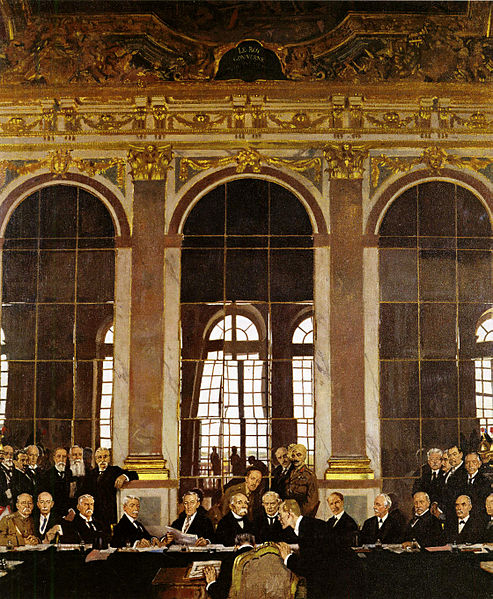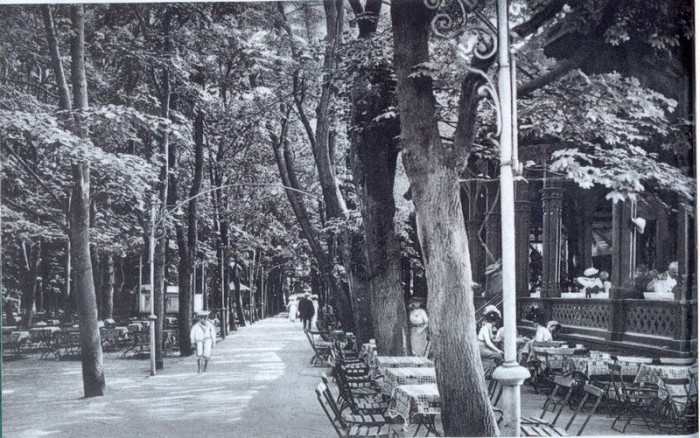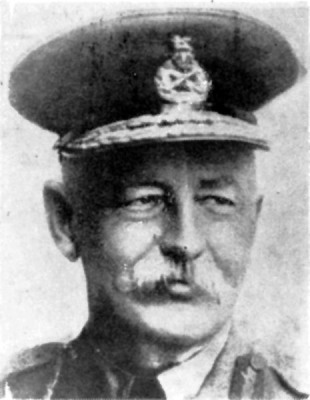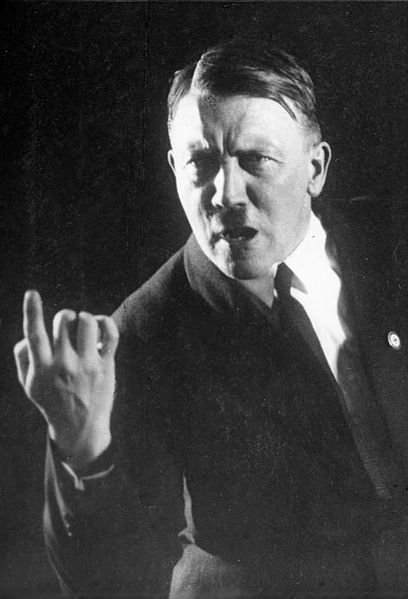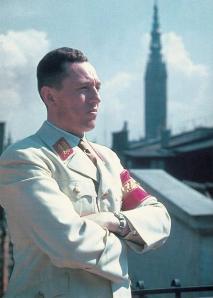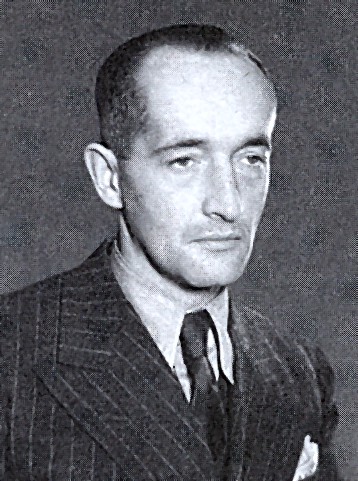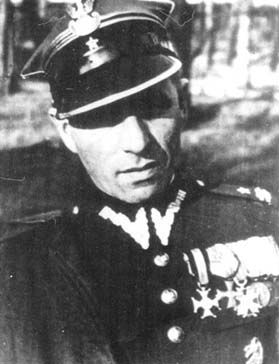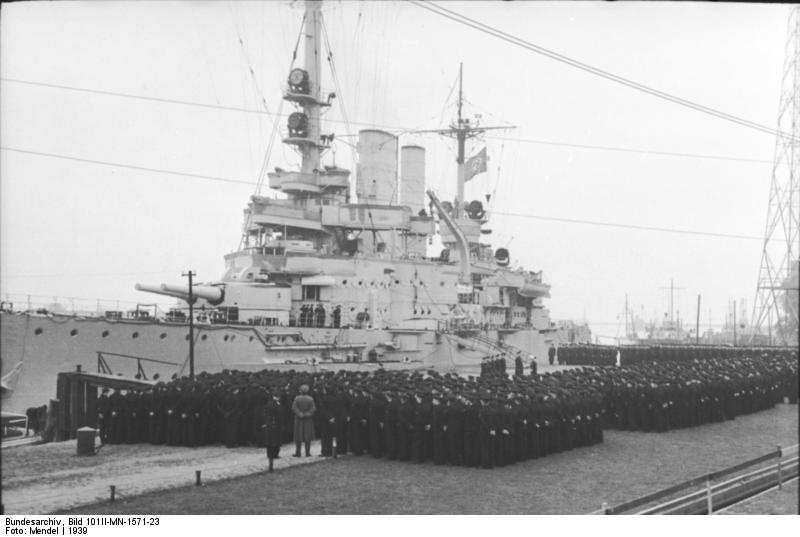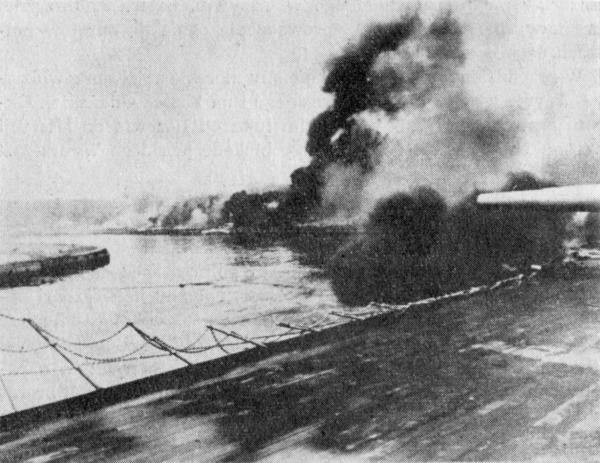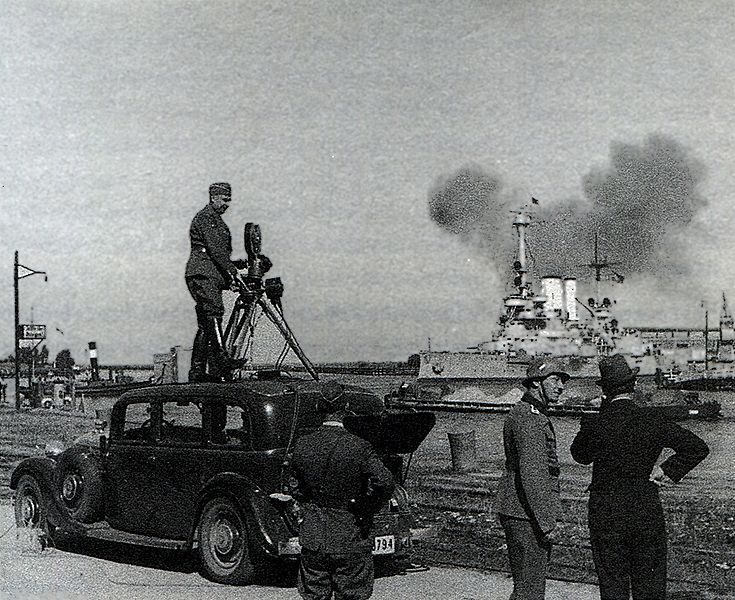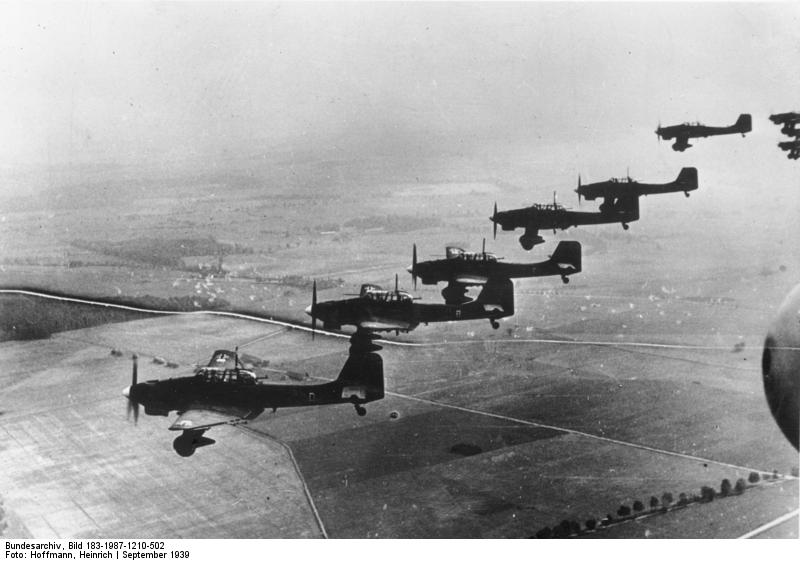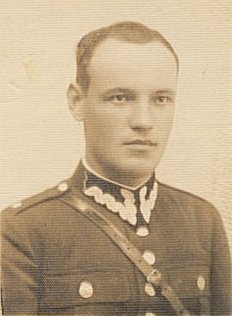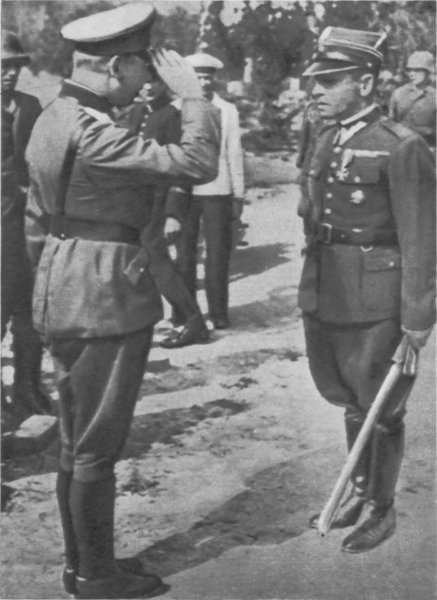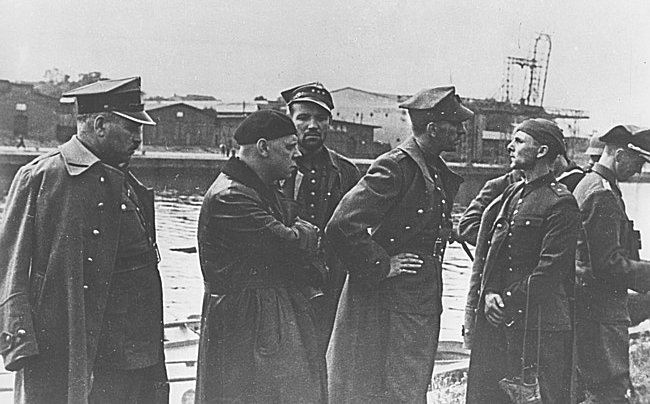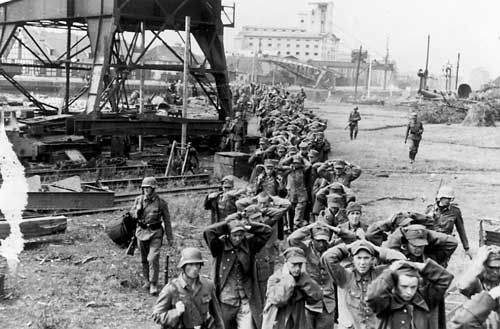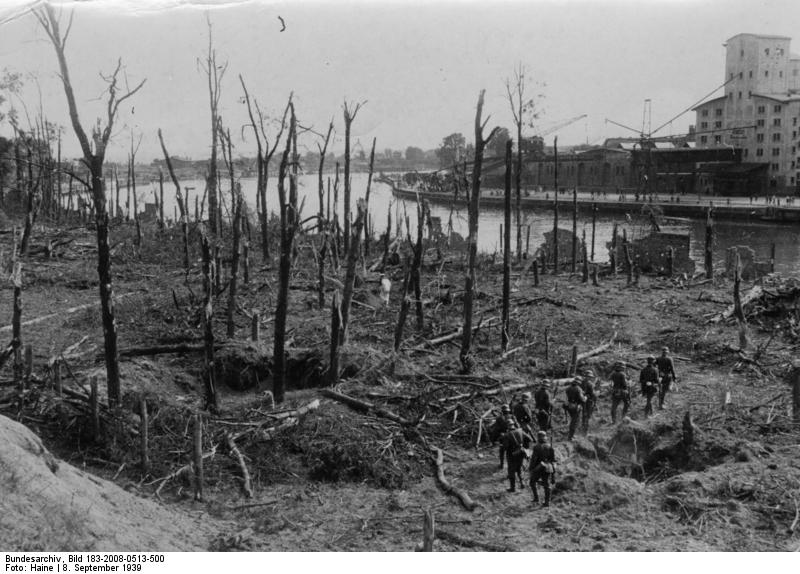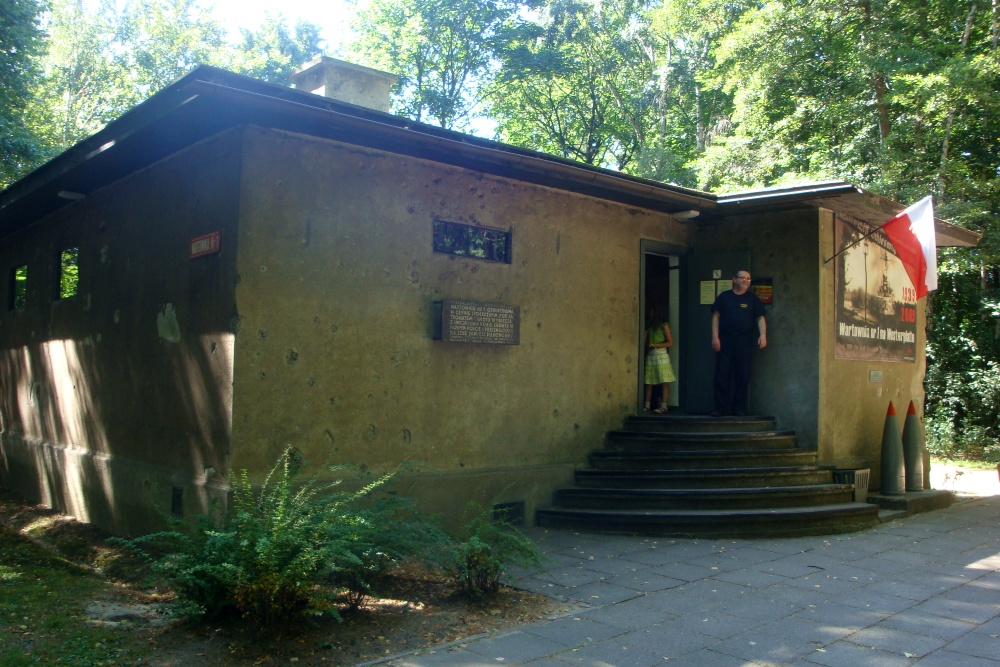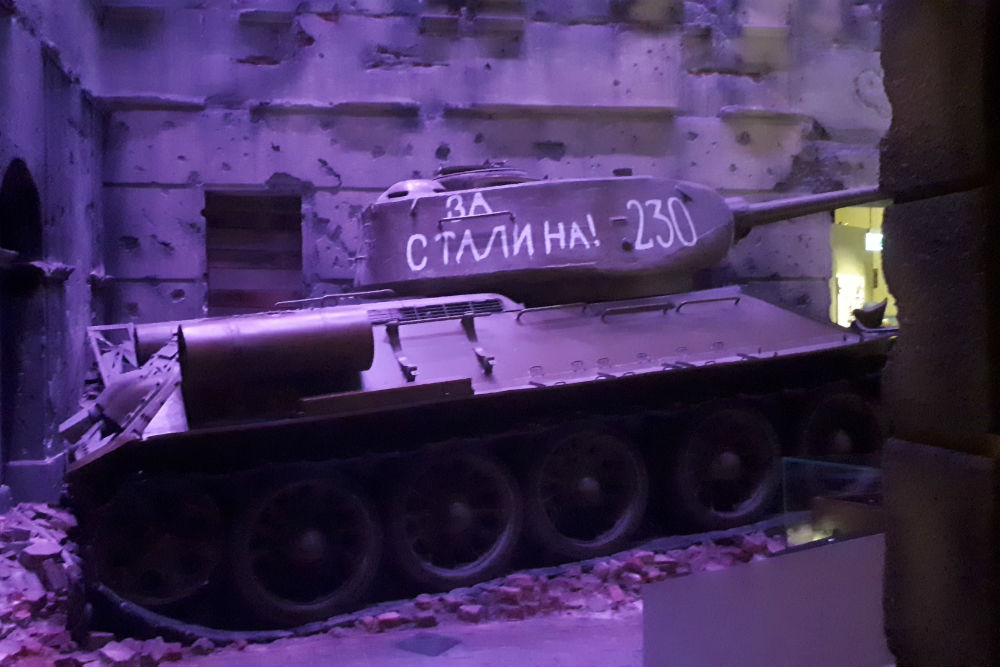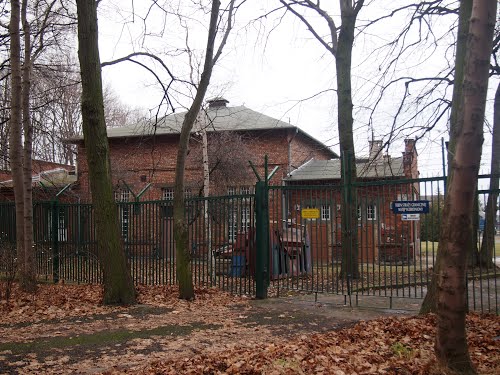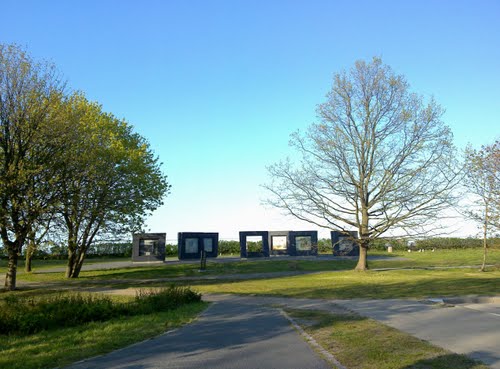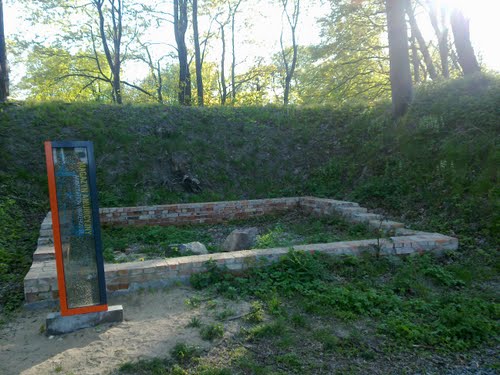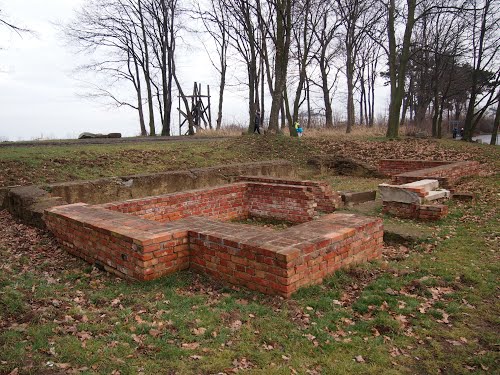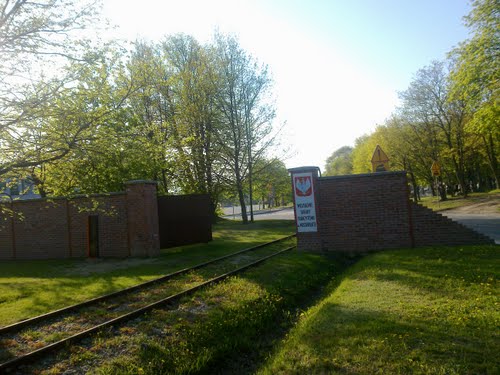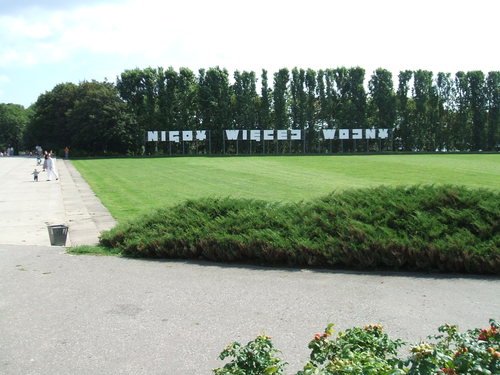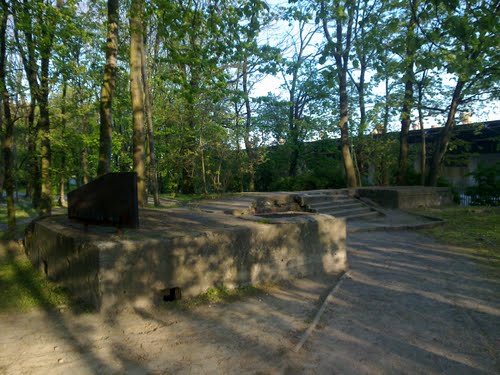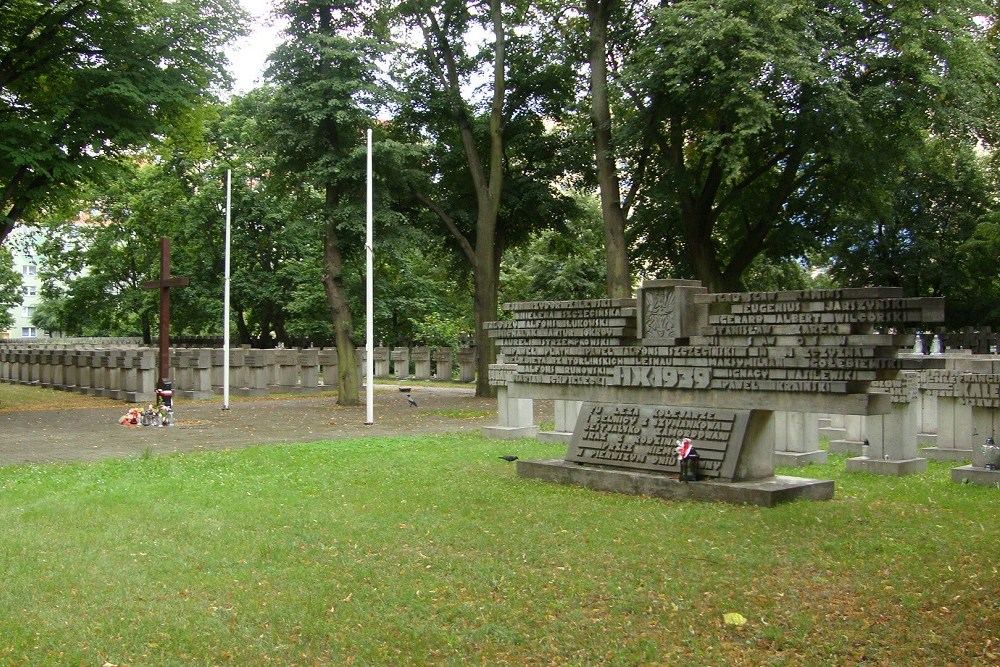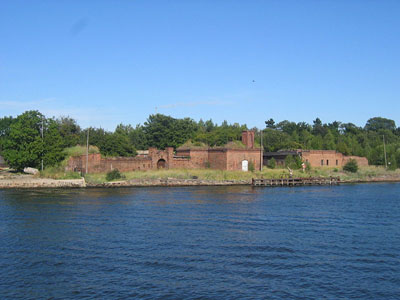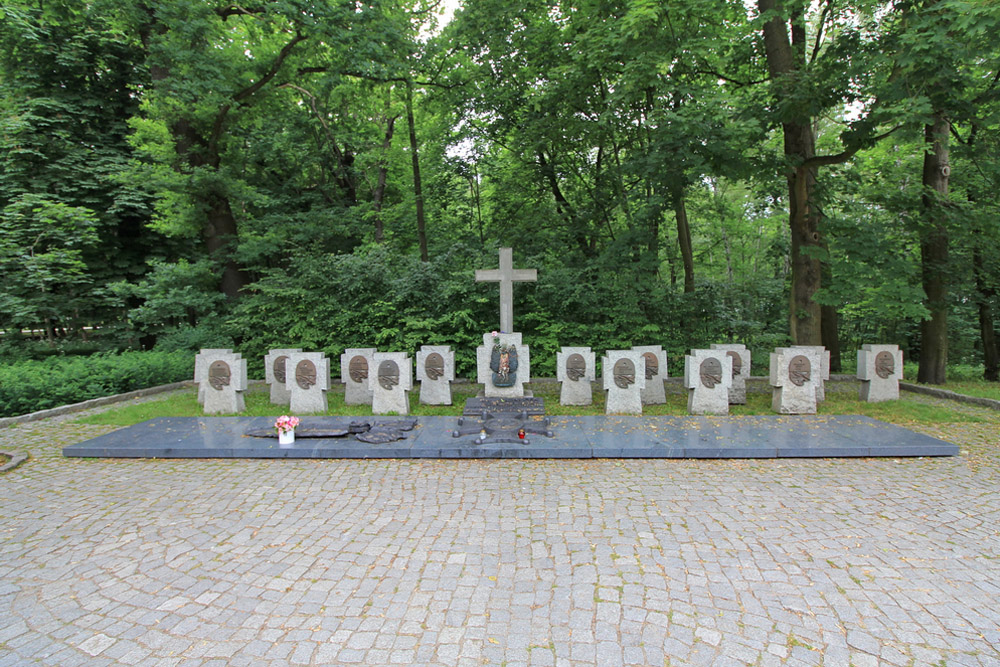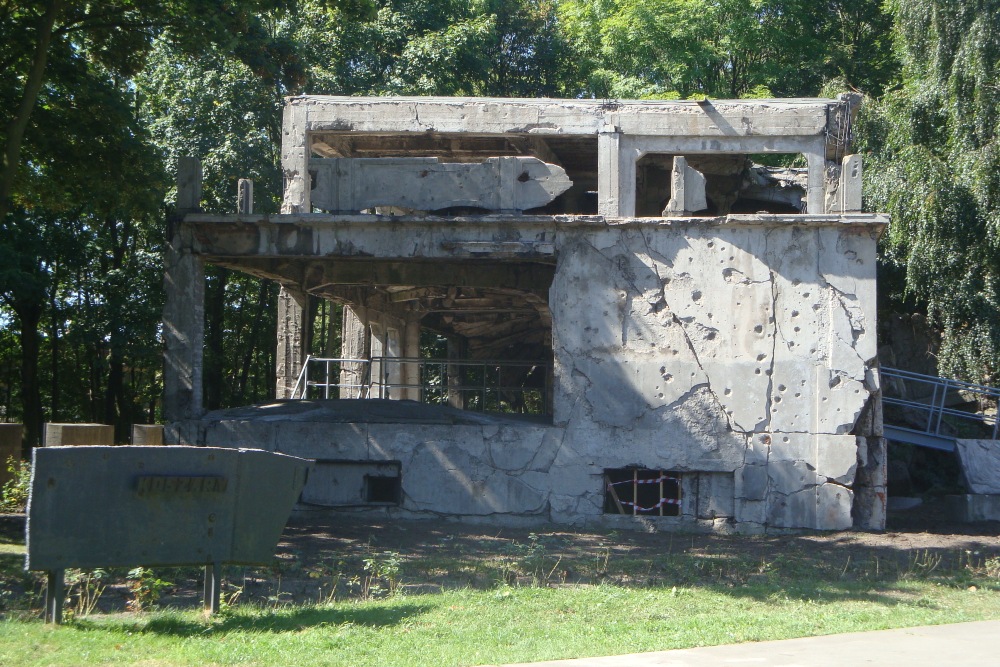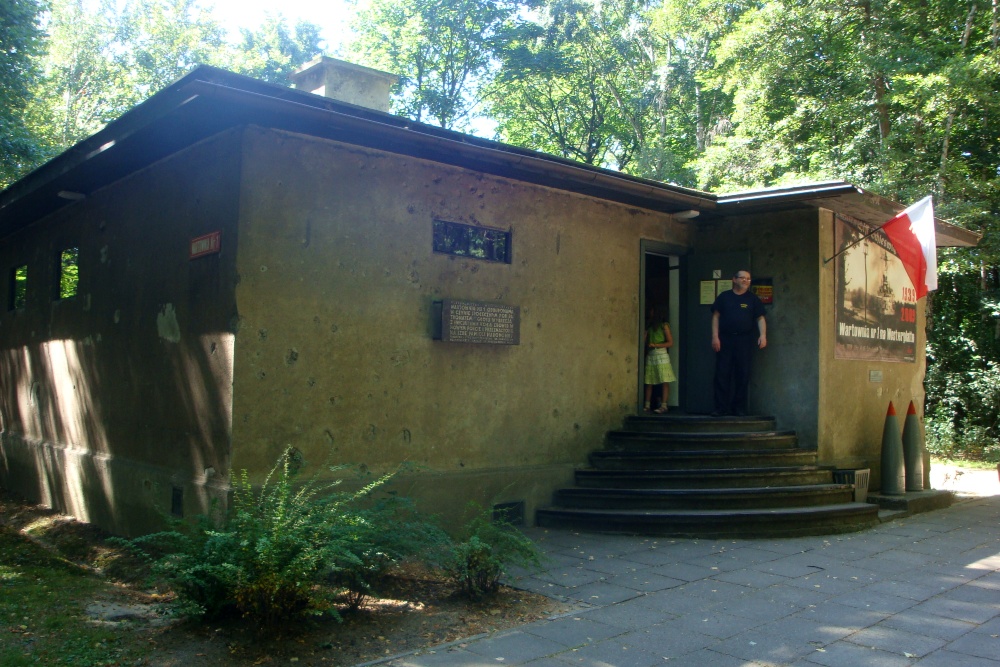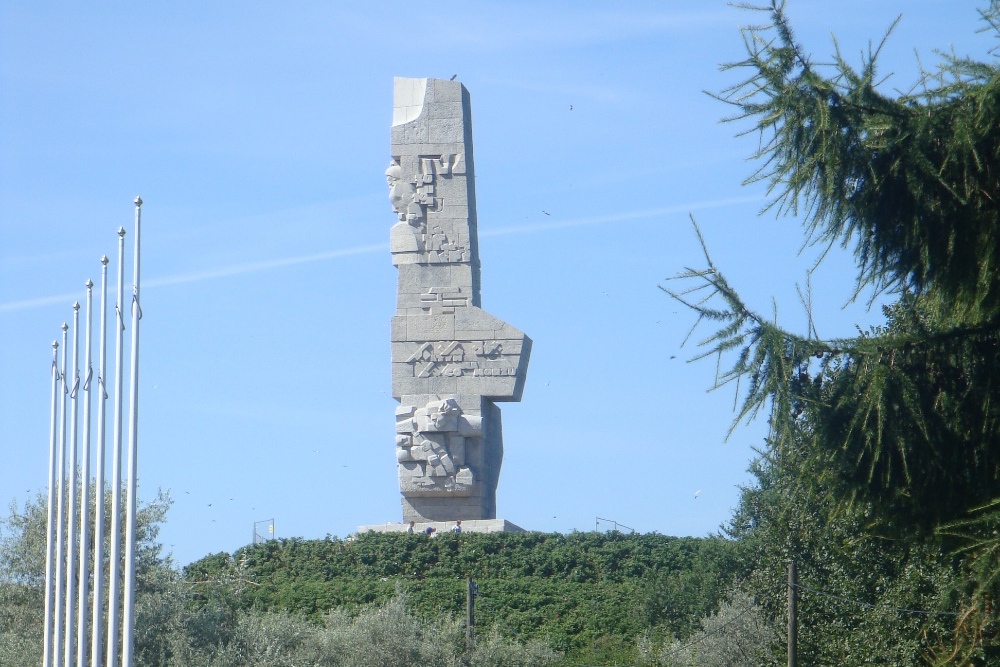Introduction
The battle of the Polish peninsula Westerplatte near the Free City of Danzig can be considered the very first battle of the Second World War. The Polish soldiers on the peninsula defended it for a week and repulsed various German attacks. The battle of Westerplatte became a source of inspiration for the entire Polish army and for the Polish population during the German invasion of their country. Even today, the battle is still considered a symbol of resistance during the invasion and is also known as the 'Polish Verdun.'
Previous history
During the Paris Peace Conference, which lasted until May 1919, the suggestion was made to turn Danzig into a so-called Free City. The Treaty of Versailles, which was signed on June 28, 1919 and went into effect on January 10, 1920, granted Danzig a special status, supervised by the League of Nations. Article 104 of this treat stipulated that a convention had still to be signed to determine in detail the rights of Poles in the Free City. This convention was signed in Paris on November 9, 1920 by representatives of Poland and Danzig and on November 15, 1920, Danzig was declared an independent state: the Free City of Danzig. Poland was granted free access to the port of Danzig and was allowed to protect her borders within the Polish customs area. Pursuant to the convention, Poland was also allowed to use the harbor facilities, the railways, the post office and the telephone and telegraph lines to guarantee a sound trade structure between Danzig and Poland. In the convention of November 9, 1920, respecting the rights of the Polish minority was also guaranteed. The Polish authorities would also promote the interests of the Free City and its inhabitants at international level. The treaty of Warsaw of October 24, 1921, signed to execute and supplement the convention of November 9, 1920, emphasized the Polish privileges in Danzig.
The German citizens of Danzig protested against the separation from the German state. During the Soviet-Polish war, the Communist German harbor workers went on strike in July and August and refused to offload weapons and ammunition destined for Poland from arriving vessels. Their work was taken over by British soldiers which triggered a wave of protests and demonstrations in the city. The strike got worse and spread across the city with the aim to declare the neutrality of Danzig. The strikes gradually petered out when a Polish counteroffensive forced the advancing Red Army to withdraw. In September 1921, the German laborers resumed their work in the harbor.
In the same period, Poland was permitted by the League of Nations and the Allied Supreme Command to transfer a small garrison to Danzig in order to protect the transport of weapons to the harbor. These units arrived in September 1921 and the 60 men strong garrison was billeted in the old barracks in the new port. The city council protested against this. On June 22, 1921, Poland received permission to establish a location in Danzig where she could store her military equipment. A small unit was ordered to guard this military depot.
Definitielijst
- invasion
- Armed incursion.
- League of Nations
- International league of Nations for cooperation and security (1920 – 1941). The League was located in Geneva, in neutral Switzerland. During the 1930s the league of nations could do little against aggressive behaviour of Japan, Manchuria, Italy, Abyssinia and Hitler. The league of nations was in fact the predecessor of the United Nations.
- neutrality
- Impartiality, absence of decided views, the state of not supporting or helping either side in a conflict.
- Red Army
- Army of the Soviet Union.
- resistance
- Resistance against the enemy. Often also with armed resources.
Establisment of the military depot on Westerplatte
Realization of this depot didn't proceed without a hitch. The Harbor Council suggested to establish it on the island of Holm. The city government as well as Poland rejected this proposal. The Danzig city council wanted it depot to be established in open sea near Swibno but the Poles rejected this idea. Due to the disagreement between the parties, the High Commissioner of the League of Nations in Danzig, Richard Haking, decided to look for a location for this project himself. In the end he decided the depot was to be established on the Westerplatte peninsula anyway. The Danzig city council as well as the Polish authorities refused to accept this decision, forcing the League of Nations to set up a committee that was tasked with finding a suitable location for the depot.
This committee started its investigation in early 1924 and eventually decided that after all, the Westerplatte was the best option. Acting on this decision, the League of Nations decided the peninsula be supervised by Polish military. The Harbor Council was ordered to construct docks and a railway to and on the peninsula. In August 1924, building of the depot started, supervised by Rear-admiral Jerzy Zwierkovski. Realizing a new dock and warehouses for weapons, ammunition and explosives became a priority.
The ammunition basin was built on the western side of the peninsula and was completed in November 1925 despite problems with materials. Six harbor cranes were placed along the basin. The railway to the depot was completed in the summer of 1925 and connected the ammunition basin to the warehouses. A total of 22 brick warehouses were built on the premises. On October 31, 1925 Westerplatte was handed over to Poland by means of a perennial lease contract. The Poles were to adhere to the following rules:
- Erecting fortifications on the peninsula is prohibited.
- Only authorized personnel shall be allowed to enter the military terrain
- A number of representatives of the Danzig city council shall be allowed to enter the premises for inspection
- The garrison shall consist of no more than 88 persons: 2 officers, 20 NCOs and 66 ranks
The first Polish military detachment arrived in January 1926. After Westerplatte had become Polish territory, expansion of the infrastructure was started, A railway station, an artesian well, a transformer and a power station were built. In addition a telephone connection was made between Westerplatte and the Danzig post office and telephones were installed in all guard houses on Westerplatte. The terrain was surrounded by a six foot high wall and barbed wire fences were erected for protection. In addition a warning system was installed.
Definitielijst
- League of Nations
- International league of Nations for cooperation and security (1920 – 1941). The League was located in Geneva, in neutral Switzerland. During the 1930s the league of nations could do little against aggressive behaviour of Japan, Manchuria, Italy, Abyssinia and Hitler. The league of nations was in fact the predecessor of the United Nations.
The German grip on the Free City of Danzig tightens
The presence of the military depot and the Polish soldiers on the peninsula caused continuous resistance from the city council and the German inhabitants of the town. The council argued that an explosion of the depot would threaten the city and its surroundings. A fire in a few warehouses in 1929 was used by the council to strengthen their argument. The anti-Polish sentiments among the German population in Danzig continued to grow during the following years which triggered increasing support for the National Socialist German Workers Party or NSDAP. In October 1930, the party emerged as the second largest party in town and Adolf Hitler appointed Albert Forster Gauleiter of Gdansk to strengthen the influence of the party in the city.
The presence of the German navy in the Free City of Danzig began in July 1927 with a visit of the navy vessel Hessen to the port of Danzig. More navy vessels followed suit and they were all warmly received by the city council and the inhabitants. Early 1930, the harbor police was replaced by the German Ordnungspolizei (ORPO) and the number of SS shock troops in the city increased. These developments caused great worries to the Polish leader, Marsalek Jyzef Pilsudski and he ordered Rear admiral Swierski to expand the Polish garrison on Westerplatte. On March 6, 1933, a Polish unit of 120 men arrived in Danzig. In a reaction to this concentration of troops, the League of Nations ordered the senator of the Free City of Danzig to reinstate the harbor police instead of the ORPO. After the harbor police had been reinstalled, the Polish soldiers who had just arrived were sent to the Hel peninsula to reinforce the local garrison.
Towards the end of 1933, the German-Polish relations started to improve and in January 1934, a non-aggression pact was signed. In the second half of 1936, the influence of the NSDAP in Danzig increased once more and the anti-Polish and anti-League of Nations as well. This resulted in aggression against the Jewish population in Danzig and representatives of the League of Nations. Between 1934 and 1936, the relation between the Polish garrison and the Danzig city council could be considered fine.
Definitielijst
- Gauleiter
- Leader and representative of the NSDAP of a Gau.
- League of Nations
- International league of Nations for cooperation and security (1920 – 1941). The League was located in Geneva, in neutral Switzerland. During the 1930s the league of nations could do little against aggressive behaviour of Japan, Manchuria, Italy, Abyssinia and Hitler. The league of nations was in fact the predecessor of the United Nations.
- non-aggression pact
- Agreement wherein parties pledge not to attack each other.
- resistance
- Resistance against the enemy. Often also with armed resources.
Preparing for battle
In the summer of 1933, the Polish military high command decided to build concrete guard houses and a bomb proof barracks on Westerplatte in order to create a defensive perimeter to protect the peninsula against an attack. Construction lasted from 1933 to 1936 and was carried out in secret.
Early 1938, the relation between the Polish government and the Danzig city council deteriorated. Polish national flags were removed and government buildings were even attacked and plundered by German activists in some cases. In March 1939, the Lithuanian port of Klaipeda (Memel) was occupied by German troops to the great joy of the inhabitants of Danzig. In May 1939, aggression towards the Polish minority increased and in June, the Polish commissioner-general in Danzig, Marian Chodacki, decided to evacuate families of Polish government officials in town.
In the spring of 1939, the military depot on Westerplatte was put on high alert due to a threatening confrontation and preparations were made for defense. A new warning system was installed, the terrain was totally darkened at night, trains bound for Westerplatte were searched thoroughly, the defense was more heavily armed, blockades were put up and the forest was partially torn down to expand the firing range for machineguns. In August 1939, the garrison was secretly expanded to 176 ranks and 6 officers.
On August 25, 1939, the German navy training vessel Schleswig-Holstein entered the port of the Free City of Danzig and dropped anchor 150 yards from Westerplatte. She was armed with four 280mm cannon, four 150mm cannon and four flak batteries. There were 596 men on board as well as 175 cadets and 60 flak gunners. In addition, there were some 225 Stoßtruppen below decks who had participated in the occupation of Klaipeda and had boarded on the way. This company had been secretly ordered to attack Westerplatte in the morning of August 26. In the end, Adolf Hitler decided to postpone the attack because of the Polish-British Common Defense Pact which was signed on August 25. Doubts about a possible Italian participation in the attack on Poland, caused by the so-called Steel Pact, signed on May 22, 1939, between Germany and Italy also played a role in the decision to postpone the attack.
On August 26, Major Henryk Sucharski decided to put the garrison on Westerplatte on full alert. When the Schleswig-Holstein remained in port longer than intended, the Polish government began to get worried. The Germans justified their extended presence by claiming that fuel had to be replenished.
Definitielijst
- cannon
- Also known as gun. Often used to indicate different types of artillery.
- flak
- Flieger-/Flugabwehrkanone. German anti-aircraft guns.
The battle: September 1, 1939
On Friday, September 1, 1939, Kapitän-zur-See Gustav Kleikamp, ordered Schleswig-Holstein to open fire on Westerplatte with all guns This order heralded the beginning of the Second World War. A little later, the first gun fired its lethal projectiles. The shells came down on the southwestern side of the peninsula. The aim of the seven-minute barrage was to breach the defensive wall which was in the way of the assault group of the Kriegsmarine commanded by Oberleutnant Wilhelm Henningsen. Machinegun nests on German side also opened fire on the depot.
The Polish garrison on Westerplatte, at the time consisting of 182 military and 27 civil reservists was surprised by the ferocity of the sudden barrage. Major Sucharski radioed the following message to the Hell peninsula: 'SOS, I am under fire' and ordered his garrison to man their action stations. During the bombardment, the Polish soldiers hurried to their positions. A total of 90 280mm, 407 170mm and 366 88mm shells were fired by Schleswig-Holstein during this barrage. The defensive wall was breached in three places and a number of oil depots in the southeastern sector of Westerplatte were set ablaze as well.
The table below shows an overview of the deployment of German and Polish forces near Westerplatte.
| Germany | Poland |
| 3700 men | 209 men |
| 60 Junkers Ju 87 Stuka | 1 75mm wz. 02/26 field gun |
| 7 Heinkel He 51 & Junkers Ju 52 | 4 Stokes 81mm wz. 31 mortars |
| 14 ADGZ heavy armored cars | 2 Bofors 37mm wz. 36 anti-tank guns |
| 65 artillery pieces | 41 machineguns (16 heavy MG’s) |
| 100+ machineguns | 160 rifles |
| ? medium mortars | 40 pistols |
| ? flame throwers 35 flamethrowers | 1000+ hand grenades |
| 1 battleship | 860 mortar bombs |
| 2 destroyers |
When the German shock troops attacked with three platoons and the barrage by Schleswig-Holstein had ended, the Polish had manned their defensive positions. The outposts Fort, Prom, Wal and Guard House Nr. 2 absorbed the attack. The other Polish positions had remained out of range of the first assault but now were subjected to fire from heavy machineguns which had been installed in opposite buildings in the new port.
At the moment the German infantry attack was launched, engineers from the Wehrmacht blew the railway gate that gave access to the peninsula.
The effective flanking fire of heavy and light Polish machineguns, later supported by mortars, inflicted some losses on the attacking German platoons. In addition, the Germans were hampered by the natural obstacle of the dense forest. Eventually, the Germans failed to breach the Polish defensive line, despite repeated fire support from Schleswig-Holstein, and were forced to retreat at 06:22, leaving many dead and wounded on the battlefield. During this engagement, Starszy Sierzant Wojciech Najsarek was killed by German machinegun fire: the first victim of World War Two.
Meanwhile, the Danzig police force had made an attempt to capture the harbor and the far side of Westerplatte but to no avail. The Germans lost 50 men, the Poles 8.
The next German attack was launched at 08:55 and was less hasty than the previous one. The Germans advanced more slowly and made more use of natural cover. Yet, despite this new tactic, the Germans couldn't prevent further losses by machinegun fire from Guard Houses Nr 1, 2 and 5 as well as from the outposts Wal, Fort and Sierz Deik. The Germans withdrew for the second time and dug in near Mewi Szaniec. Oberleutnant Henningsen, the commander of the unit, was mortally injured during this attack.
At the end of the day, the exhausted defenders of Westerplatte had managed to halt the German attackers for 12 hours at the cost of one killed and seven injured - three of them would succumb to their injuries later, two of them in German captivity while in hospital. The outposts Wal and Prom had to be abandoned, the Poles also lost their only 75mm gun which had been damaged by fire from Schleswig-Holstein During the first day however, this gun had knocked out German machinegun posts in the new harbor with great accuracy and had almost hit the command center of Schleswig-Holstein. Out of the 225 navy personnel involved in the attacks, 16 had been killed and 120 injured.
Definitielijst
- battleship
- Heavily armoured warship with very heavy artillery.
- infantry
- Foot soldiers of a given army.
- Kriegsmarine
- Germa navy. Part of the Wehrmacht next to Heer and Luftwaffe.
- mortar
- Canon that is able to fire its grenades, in a very curved trajectory at short range.
- Wehrmacht
- German armed military forces, divided in ground forces, air force and navy.
The battle: September 2, 1939
The second day of the battle started quietly. Polski radio transmitted the message: 'Westerplatte is still fighting' each morning until the capitulation of the Polish garrison on the peninsula. Around noon, Schleswig-Holstein opened fire on Polish positions in the nearby port of Gdynia. The defenders of Westerplatte used these quiet hours to clean or repair their weapons. Some of them took a hot meal while others took a nap in the barracks. Meanwhile, the German army evacuated all citizens from the area of the new harbor which remained unnoticed by the Poles. Around this time, a company of engineers arrived in Danzig from Germany.
General Friedrich-Georg Eberhardt, in command of the 1,500 men in Danzig, convinced General Fedor von Bock, commander of Heeresgruppe Nord, that a ground attack on Westerplatte was impossible. Subsequently, Von Bock ordered Westerplatte to be bombed from the air. Around 17:30 some 60 Junkers Ju-87 STUKA dive-bombers took off from Siupsk airbase, carrying bombs of 500, 250 and 50 kilo. Half an hour later, the German aircraft were spotted by the Poles. While the aircraft bombed positions on Westerplatte from an altitude of 13,000 feet, the Polish soldier hid in bunkers near their defensive positions. A total of 26,5 ton of bombs was dropped on the peninsula that day.
The concrete barracks was bombed by the first wave of STUKAs but it was constructed in such a way it had to be bomb proof and in fact it was. Guard House Nr. 5 though was completely destroyed by a direct hit of a 500kilo bomb. Only two soldiers of the garrison survived the explosion but were gravely injured. Guard House Nr. 2 and the NCO's mess were damaged. Ammunition depots Nr. 2, 4 and 5 were also destroyed during the attack. The four mortars, available to the Poles, the water system, the kitchen and the only radio of the garrison had become unusable in the attack. From now on, the Polish soldiers had to make do with a shortage of (clean) water and dry rations.
During the 30-minute attack, 10 defenders were killed and 6 others were injured. The Westerplatte defense had been severely weakened and a number of soldiers suffered from a form of shell shock. Fortunately for the garrison, there were no German infantry attacks that day. The night of September 2 to 3 was calm and that gave the Poles the opportunity to reinforce their positions and rekindle their morale.
Definitielijst
- capitulation
- Agreement between fighting parties concerning the surrender of a country or an army.
- Heeresgruppe
- The largest German ground formation and was directly subordinate to the OKH. Mainly consisting of a number of “Armeen” with few directly subordinate other units. A Heeresgruppe operated in a large area and could number several 100,000 men.
- infantry
- Foot soldiers of a given army.
The battle: September 3 to 6, 1939
On September 3, a battery of 105mm howitzers took up positions around Wisloujscie. The same day, light navy vessels arrived in the Bay of Danzig: the destroyer T-196 and later the destroyer Von der Gröben In the night of September 3 to 4, a few German attacks on Westerplatte were repulsed. On September 4, T-196 opened fire on Westerplatte from the Danziger Bend and Von der Gröben followed suit later. These attacks didn't cause losses but they were particularly stressful for the Polish defenders. The same day, German heavy mortars were deployed near Fortress Wisloujscie.
On September 5 at 09:00 in the morning, the battery heavy howitzers near Wisloujscie opened fire on Westerplatte. This bombardment didn't cause any losses either among the Polish defenders but the condition of the wounded worsened as the surgeon of the depot, Captain Miecyslaw Slaby, was unable to treat them due to the shortage of water, surgical equipment and medicines. The artillery barrages had turned the peninsula into a cratered landscape that showed similarities with the battlefields of the First World War. Shortly after the bombardment, a split in the Polish ranks occurred. Commander Major Henryk Sucharski, showing symptoms of shell shock, ordered to burn the codes and the most important documents and subsequently decided to surrender the depot. Deputy commander Kapitan Franciszek Dabrowski protested against it during a make-shift court martial. Eventually, the Polish officers decided to continue resistance against the German army. Sucharski was relieved of his function as commander of the depot by Dabrowski and the other Polish officers; Dabrowski was to command the defenders until the surrender.
In the night of September 5 to 6, the Germans attempted to set fire to the forest on Westerplatte. The forest kept the camouflaged positions hidden from view of the Germans and prevented the attackers from observing and aiming. The Germans planned to get a tank filled with flammable material to the Polish lines and subsequently let it explode. However, the vehicle exploded sooner than intended, close to the German trenches and the fire was put out quickly.
On September 6, heavy German mortars fired at Westerplatte, damaging Guard House Nr. 2. No more losses were suffered except one injured person in the barracks. Around 15:00, the Germans attempted once more to set the forest on fire, this time using two tanks full of combustible material. The defenders responded with ferocious machinegun fire and deployed a light anti-tank gun. Once again, the Germans failed to reach their target. Both vehicles were destroyed before they could reach the Polish lines.
On September 7 at 04:30, Schleswig-Holstein unleashed another artillery barrage on Westerplatte which ended at 07:00. Shortly after, German heavy machineguns hidden on the top floor of the old barracks in the harbor opened fire on the peninsula as well. That morning at 05:00 German infantry swung into action and engaged Guard Houses Nr. 1 and 2 and the outposts Fort, Bieniasza and Sierz. Deik. During her barrage, Schleswig-Holstein managed to knock out Guard House Nr. 2. Around 07:00, the Germans withdrew once again under fire support from the battleship and made a third attempt to set the woods on fire with a tank full of fuel but the attempt failed again.
Despite the repulsed attack, the Polish defenders found themselves in a dire situation. Guard Houses Nr. 2 and 5 had been knocked out and Guard Houses Nr. 1 and 4 had been damaged. In addition, the number of injured had increased and due to the shortage of water, dressings and medicines, they couldn't be treated. To make matters worse, it seemed as though hardly any food was left. All this caused Major Sucharski to decide to capitulate and at 09:45, a white flag was waved from a window of the barracks. Part of the garrison assembled at the barracks and was made prisoner-of-war. The German soldiers escorted all Polish Pows who were able to walk, to Mewi Szaniec where they were frisked and registered. The injured Polish were taken to various hospitals in Danzig.
The German high command feared the entire depot had been mined by the Polish and therefore demanded Westerplatte to be handed over to the German army personally. Major Sucharski signed the capitulation in the presence of Gustav Kleikamp. German commander Eberhardt was so impressed by the heroic defense of Westerplatte, he allowed Sucharski to keep his ceremonial saber while in captivity. The weapon reportedly has been confiscated later anyway.
Definitielijst
- battleship
- Heavily armoured warship with very heavy artillery.
- capitulation
- Agreement between fighting parties concerning the surrender of a country or an army.
- destroyer
- Very light, fast and agile warship, intended to destroy large enemy ships by surprise attack and eliminating them by using torpedoes.
- First World War
- Took place from 1914 till 1918 and is also named The Great War. The conflict started because of increased nationalism, militarism and neo-colonialism in Europe. Two alliances battled one another during the 4-year war, which after a dynamic start, resulted into static trench warfare. The belligerents were the Triple Alliance (consisting of Great-Britain, France, and Russia; later enlarged by Italy and the USA, amongst others) on the one hand and the Central Powers (consisting of Germany, Austria-Hungary, Bulgaria and the Ottoman empire) on the other hand. The war was characterized by the huge number of casualties and the use of many new weapons (flamethrowers, aircraft, poison gas, tanks). The war ended in 1918 when Germany and its allies surrendered unconditionally.
- infantry
- Foot soldiers of a given army.
- resistance
- Resistance against the enemy. Often also with armed resources.
Epilogue
After the official surrender, the Polish officers were housed in the Centralny Hotel and the NCOs and lower ranks in a temporary prison in the fortress of Biskupia Górka. On September 10, the officers were deported to an Offlag - officers' camp - and the rest of the garrison to Stammlager - camps for lower ranks - on September 12.
Fifteen Polish soldiers were killed in battle and 26 others injured but these numbers may actually be higher. German losses are estimated at 50 killed and 121 wounded. These numbers have never been confirmed though. A total of 3,400 German soldiers were involved in the battle that lasted a week.
It is a known fact that after the battle, the Germans committed war crimes. Polish radio operator Kazimierz Rasiñski for instance was murdered in captivity by his Gestapo interrogators when he refused to mention radio codes. According to unconfirmed sources, seven other Polish Pows met the same fate.
On September 19, 1939, Adolf Hitler arrived in Danzig and he received a warm welcome from the inhabitants of the city. On September 21, he visited Westerplatte to see the 'fortress' that had defended itself against his troops with his own eyes. After having inspected the fortifications, he walked to the banks of the peninsula to personally thank the crew of Schleswig-Holstein from a distance for their efforts to 'liberate' Danzig. In the days after, Hitler paid a visit to Gdynia and Sopot.
At the end of the war, from March 28, 1945 onwards, Westerplatte was the scene of heavy fighting again. This time by the German 73. Infanterie-Division, which was compelled to retreat from the new port to the peninsula by Soviet mechanized forces. The Germans fought for the peninsula for three days, repulsing numerous attacks by the Soviet 76th Guards Division. On April 1, 1945, the remaining German defenders were taken off the peninsula by boat.
The battle of Westerplatte in 1939 was a great source of inspiration for the Polish army and citizens during the German invasion. Even today, the battle is still considered a symbol of resistance during the invasion. The battle is also called the Polish Verdun due to the large number of artillery barrages the garrison had to endure. Polish writer Konstanty Galczyñski wrote a poem about the battle entitled Piesñ o zolnierzach Westerplatte (A song of the soldiers of Westerplatte). In 1943, the Polish 1st Mechanized Brigade was granted the honorary title of the defenders of Westerplatte in honor of the defenders of the peninsula.
Major Sucharski survived the war and received a controversial status as a hero as he, according to numerous sources, had been in a state of shell shock for a large part of the battle and Captain Dabrowski had taken over his duties.
Definitielijst
- Brigade
- Consisted mostly of two or more regiments. Could operate independently or as part of a division. Sometimes they were part of a corps instead of a division. In theory a brigade consisted of 5,000 to 7,000 men.
- invasion
- Armed incursion.
- resistance
- Resistance against the enemy. Often also with armed resources.
- Stammlager
- Main or base camp. One of the 22 concentration camps with multiple subsidiary external camps.
- war crimes
- Crimes committed in wartime. Often concerning crimes committed by soldiers against civilians.
Timeline
An overview of the battle of Westerplatte:
| August 25, 1939: | |
| August 26, 1939: | Major Henryk Sucharski decides to put the garrison on Westerplatte on full alert. |
| September 1, 1939: | |
| September 2, 1939: | 60 Junkers Ju-87B STUKA dive-bombers bomb Westerplatte. |
| September 3, 1939: | |
| September 4, 1939: | The German destroyers T-196 and Von der Gröben open fire on Westerplatte from the Bend of Danzig. |
| September 5 to 6 1939: | Heavy artillery barrages and fighting on Westerplatte. |
| September 7, 1939: | |
| September 10, 1939: | The arrested officers on Westerplatte are deported to Oflags. |
| September 12, 1939: | The remaining ranks and NCOs of the Westerplatte garrison are deported to Stalags. |
| September 19, 1939: | Adolf Hitler arrives in Danzig. |
| September 21, 1939: | Adolf Hitler inspects Westerplatte. |
| September 27, 1939: | Warsaw falls. |
| October 6, 1939: | Poland capitulates. |
Order of battle of the German troops during the battle of Westerplatte.
| Kriegsmarine | Training vessel Schleswig-Holstein |
| Destroyer T-196 | |
| Destroyer T-963 Von der Gröben | |
| Luftwaffe | II & III Gruppe StG 2 Immelmann |
| 4.(St)/TrGr 186 | |
| Gruppe Eberhardt | 3. Marine-Stoßtrupp-Kompanie |
| Haubitzen-Abt | |
| Küstenschutz der Danziger Polizei | |
| Landespolizei Regiment | |
| SS Heimwehr Danzig |
Polish soldiers killed on Westerplatte:
| Number | Rank | Name | Killed on …. |
| 1 | Private 1st class | Konstanty Jezierski | September 1, 1939 |
| 2 | Staff Sergeant | Wojciech Najsarek | September 1, 1939 |
| 3 | Corporal | Andrzej Kowalczyk | September 1, 1939 |
| 4 | Private | Bronislaw Uss | September 1, 1939 |
| 5 | Private 1st class | Zygmunt Zieba | September 1, 1939 |
| 6 | Private | Wladyslaw Jakubiak | September 2, 1939 |
| 7 | Corporal | Adolf Petzelt | September 2, 1939 |
| 8 | Corporal | Bronislaw Perucki | September 2, 1939 |
| 9 | Corporal | Jan Geburai | September 2, 1939 |
| 10 | Private | Mieczyslaw Krzak | September 5, 1939 |
| 11 | Private | Jan Czywil | September 5, 1939 |
| 12 | Private 1st class | Wladyslaw Okraszewski | September ?, 1939 |
| 13 | Private 1st class | Antoni Pirog | September ?, 1939 |
| 14 | Private 1st class | Ignacy Zatorski | September ?, 1939 |
| 15 | Private | Jozef Kita | September ?, 1939 |
| 16 | Unknown | Unknown | September ?, 1939 |
| 17 | Unknown | Unknown | September ?, 1939 |
| 18 | Unknown | Unknown | September ?, 1939 |
| 19 | Unknown | Unknown | September ?, 1939 |
Definitielijst
- Luftwaffe
- German air force.
- Nazi
- Abbreviation of a national socialist.
The battlefield today: a short guide
Westerplatte can be visited today in Gdańsk. A 75 feet high monument stands on the peninsula in memory of the Polish defenders and some of the fortifications can still be visited as well, the ruins of the bomb proof barracks being the most interesting. One of the guard houses has been converted into a small museum for the visitors. This museum displays how it must have looked like in those September days in 1939. With documents and objects, the visitor is made familiar with the battle of Westerplatte. On the spot where Guard House Nr. 56 once stood, a symbolic war graveyard has been laid out for the fallen Polish soldiers of the garrison. Outside Westerplatte, fortress Mewi is open to the public This was built between 1844 and 1876 as part of the fortress of Gdańsk. During the battle of Westerplatte this fortress was used by the Germans as their jump-off base. After the battle the building has been used a while as a camp for the Polish Pows.
Information
- Article by:
- Kaj Metz
- Translated by:
- Arnold Palthe
- Published on:
- 06-01-2023
- Last edit on:
- 30-09-2024
- Feedback?
- Send it!
